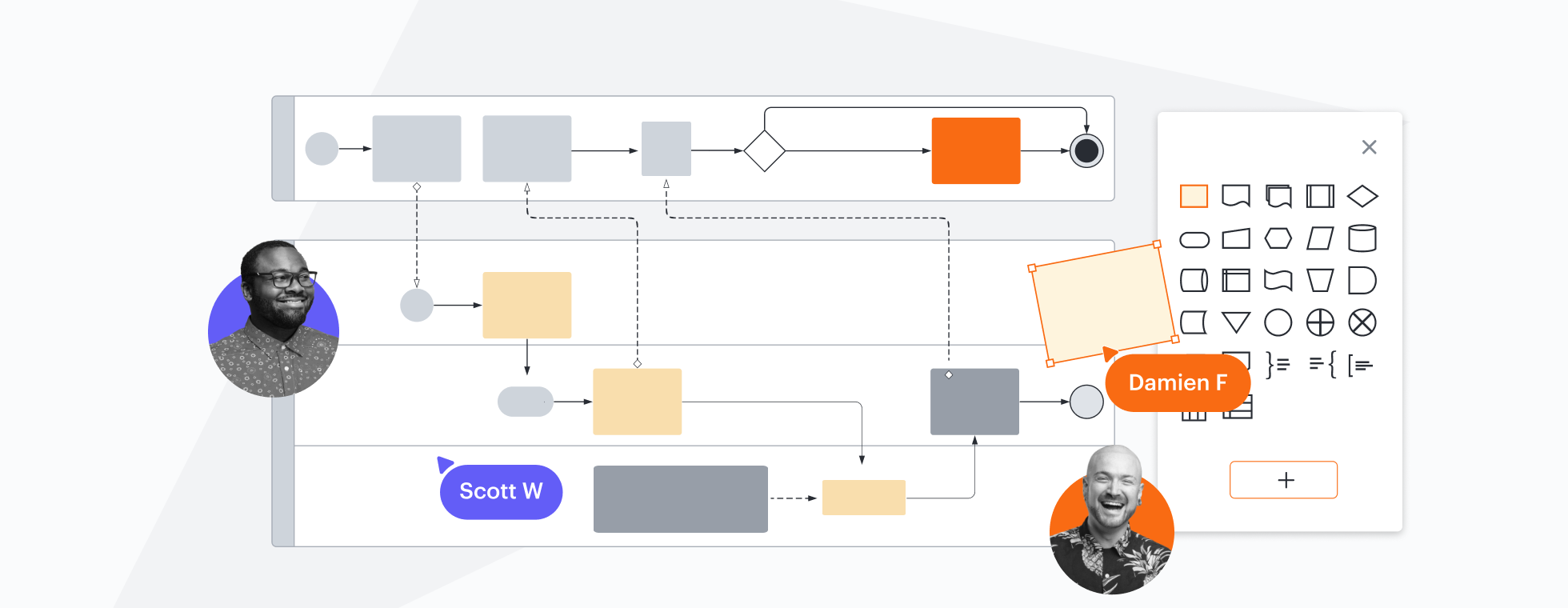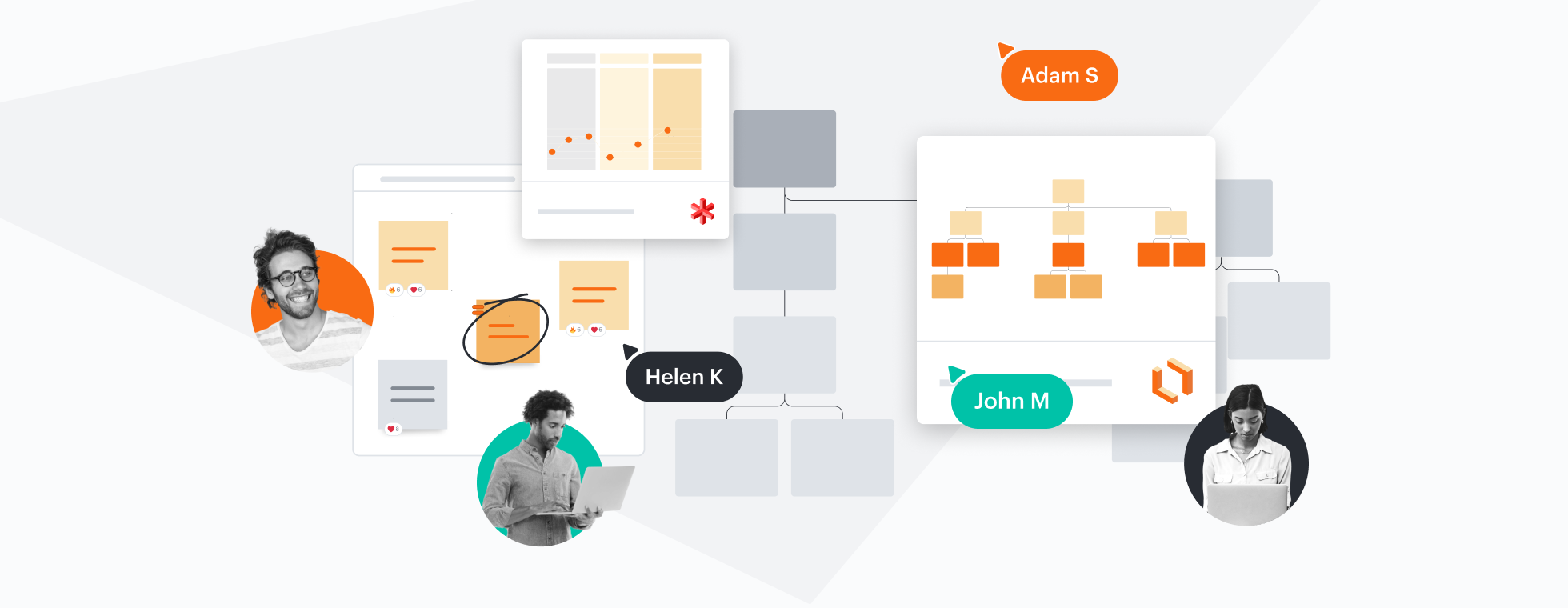Lucidchart vs. Visme
Compare the Visme data visualization tool with Lucidchart, the intelligent diagramming application. See how Lucidchart beats Visme on advanced diagramming, integrations, and more.
or continue with
By registering, you agree to our Terms of Service and you acknowledge that you have read and understand our Privacy Policy.
Lucid is the market leader in visual collaboration
Lucid supports deep diagramming and deep collaboration
Lucid supports every stage of your workflow
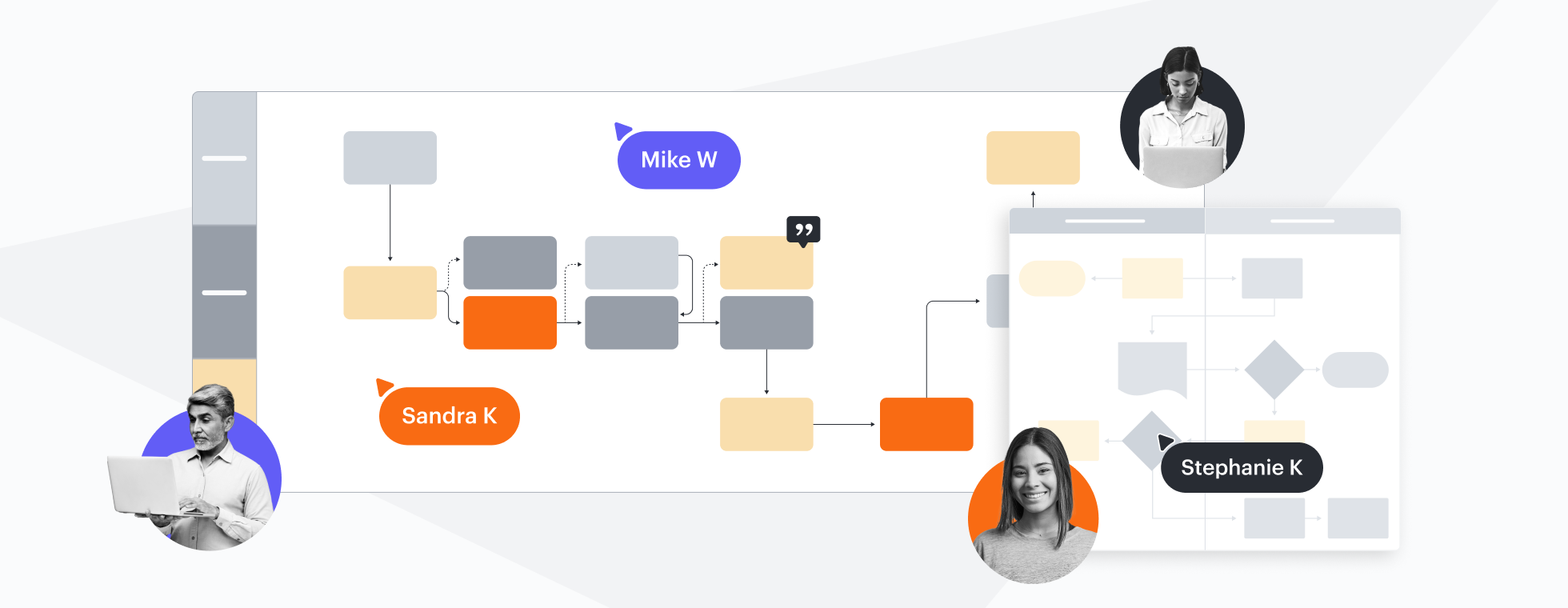
Designed to help you transform complex data into actionable insights, Lucid is the most used visual collaboration platform. In contrast, Visme lacks features that make diagrams actionable.
Why teams choose Lucidchart
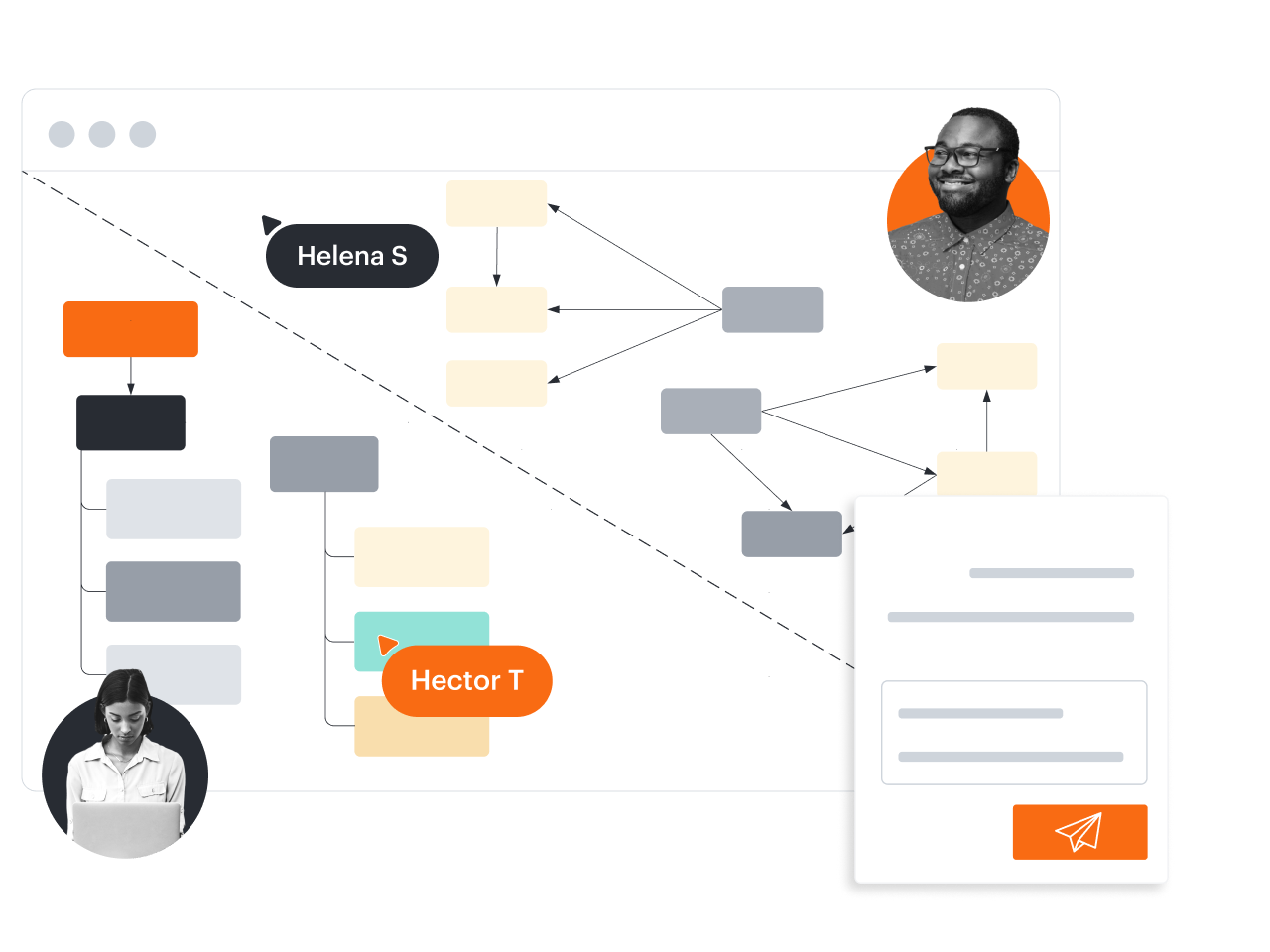
Purpose-built for diagramming
Lucidchart makes it easy for anyone to build charts and diagrams of all types—everything from org charts and flowcharts to customer journey maps and timelines. Visme offers the ability to make visuals, but the platform is geared more toward creating design assets than visualizing and documenting complex ideas, systems, and processes.

Advanced data and automation capabilities
With features that support “intelligent” visualizations, Lucidchart gives you the power to transform complex data into actionable insights. For example, you can apply formulas for calculations, import data to generate diagrams automatically, or use data linking to add live data to visuals. Visme doesn’t support this level of complexity.
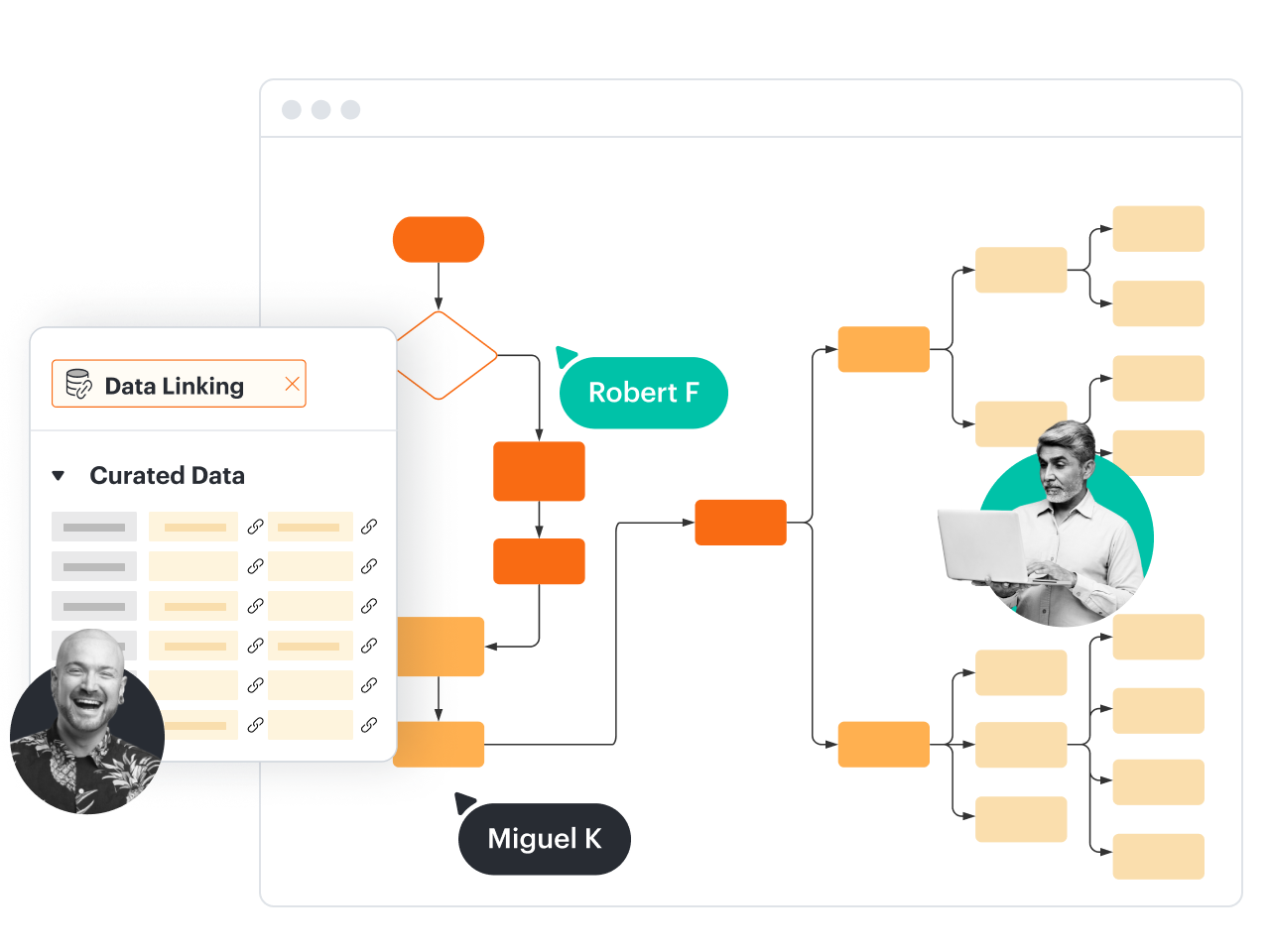
Integrations for broader use cases
Like Visme, Lucidchart integrates with Google Drive, OneDrive, and Slack. But Visme lacks core integrations with products such as Atlassian, Figma, and Microsoft. Visme offers fewer integrations than Lucidchart overall and doesn’t connect with apps designed to support broader use cases, such as BambooHR, LeanIX, ServiceNow, and more.
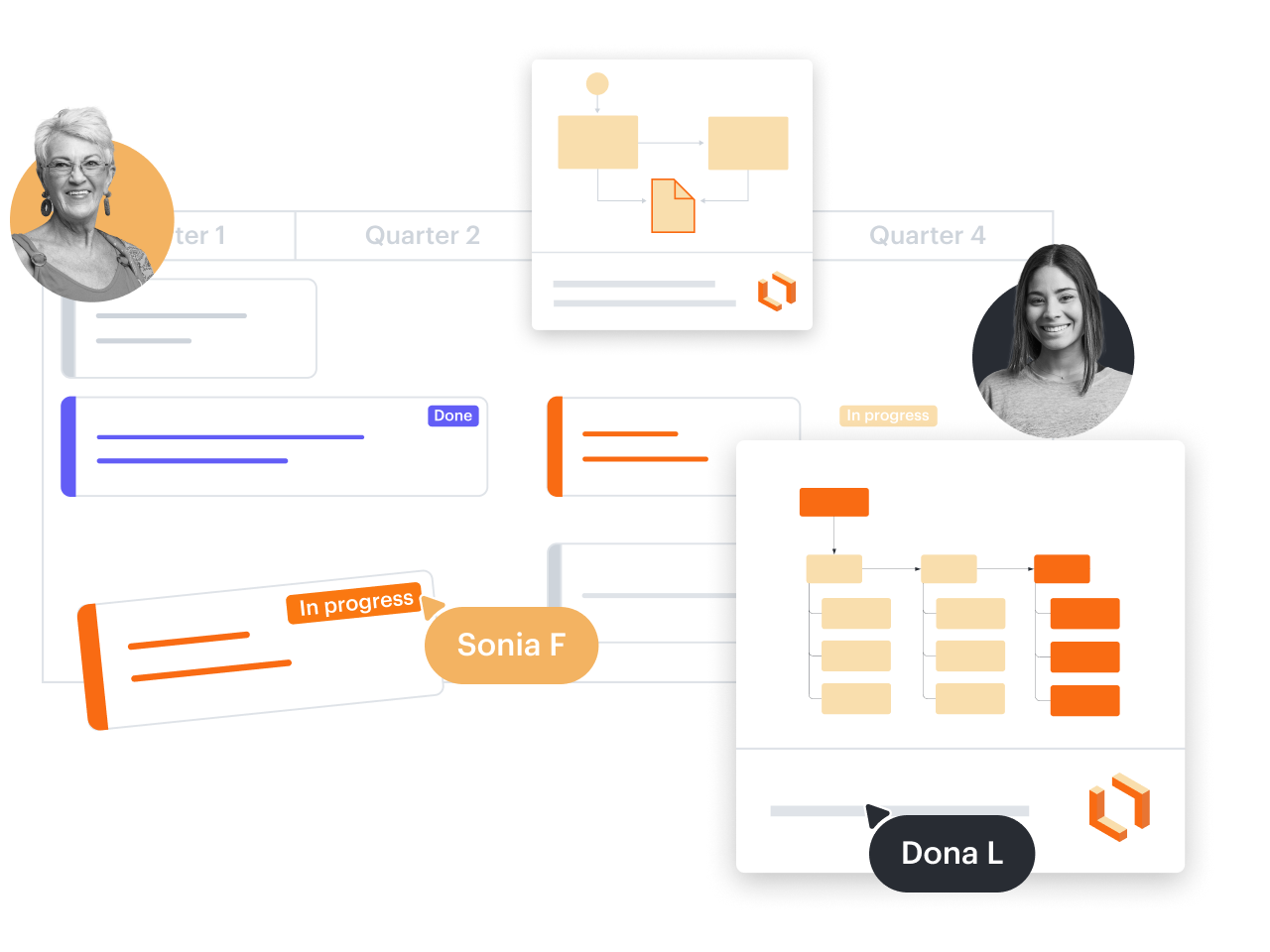
Real-time or anytime collaboration
Lucidchart boosts collaboration by allowing teams to build, edit, and comment on diagrams simultaneously. Visme allows users to work together on visuals, but it lacks Lucidchart’s advanced features, such as the ability to invite collaborators with a Join ID and to compare current and future states by toggling layers.
“The value is in the product’s simplicity—it’s easy to use and easy for anyone to understand, regardless of their technical level.”
Nathan Shaub — Senior Consultant at Credera
“Lucidchart promotes the efficiency and effectiveness of our teams, but better yet, it just makes creating diagrams and flows more accessible, more intuitive, and more consistent throughout the company. It takes away the worry or concern that employees have when making something that needs to look good.”
Anonymous — MessageBird
“I think organizations realize that Lucidchart is the tool of choice because of its visual modeling, layering, math functions, and collaboration capabilities. Nothing comes close.”
Dennis Jones — Agile Coach
Comparing Lucidchart vs Visme
| Features | Lucidchart | Visme |
|---|---|---|
| Advanced diagramming features | ||
| Process diagram | Feature is included | Feature is included |
| Hyperlinking | Feature is included | Feature is not included |
| Templates | Feature is included | Feature is included |
| Layers | Feature is included | Feature is not included |
| Tasks | Feature is included | Feature is not included |
| Shape actions | Feature is included | Feature is not included |
| Sticky notes | Feature is included | Feature is not included |
| Org chart shapes with data and photos | Feature is included | Feature is not included |
| Org chart group view | Feature is included | Feature is not included |
| Compare versions | Feature is included | Feature is not included |
| Compare docs | Feature is included | Feature is not included |
| Revision history with versioning | Feature is included | Feature is included |
| Data overlay | Feature is included | Feature is not included |
| Data refresh | Feature is included | Feature is not included |
| Mobile (iOS/Android) mockup shape libraries | Feature is included | Feature is not included |
| Data and automation features | ||
| Shape libraries | Feature is included | Feature is not included |
| Basic swimlanes | Feature is included | Feature is included |
| Formulas | Feature is included | Feature is not included |
| Custom shape data fields | Feature is included | Feature is not included |
| Conditional formatting | Feature is included | Feature is not included |
| Data linking | Feature is included | Feature is not included |
| Data-linked dashboards and reports | Feature is included | Feature is not included |
| Dynamic shapes | Feature is included | Feature is not included |
| Smart containers | Feature is included | Feature is not included |
| Integrations for advanced diagramming use cases | ||
| BambooHR | Feature is included | Feature is not included |
| ERD import and export from SQL | Feature is included | Feature is not included |
| Salesforce shape library or template | Feature is included | Feature is not included |
| ServiceNow integration | Feature is included | Feature is not included |
| LeanIX integration | Feature is included | Feature is not included |
| Sharing and collaboration | ||
| Download | Feature is included | Feature is included |
| Commenting | Feature is included | Feature is not included |
| Email and link sharing | Feature is included | Feature is included |
| Join ID | Feature is included | Feature is not included |
| Add passcode / expiration date to share links | Feature is included | Feature is not included |
| Publish without password | Feature is included | Feature is included |
Feature is included | Feature is not included | |
| Offline mode | Feature is included | Feature is included |
| Presentation mode | Feature is included | Feature is included |
More resources to help you compare Lucidchart vs. Visme
Lucidchart checks all the boxes for visualizations that support brainstorming and building.
Buyer’s guide: How to evaluate visual collaboration platforms
Learn how visual collaboration capabilities can help accelerate key initiatives and get a checklist for choosing the best platform.
What is intelligent diagramming?
See how advanced Lucidchart features, such as data linking, enable teams to see, align, and take action on their best ideas.
Lucidchart template gallery
Browse or search ready-to-use templates for hundreds of use cases. Visualize, share, and document any idea faster.
How Lucidchart compares to other competitors
See for yourself why Lucidchart is the best choice across the board.

